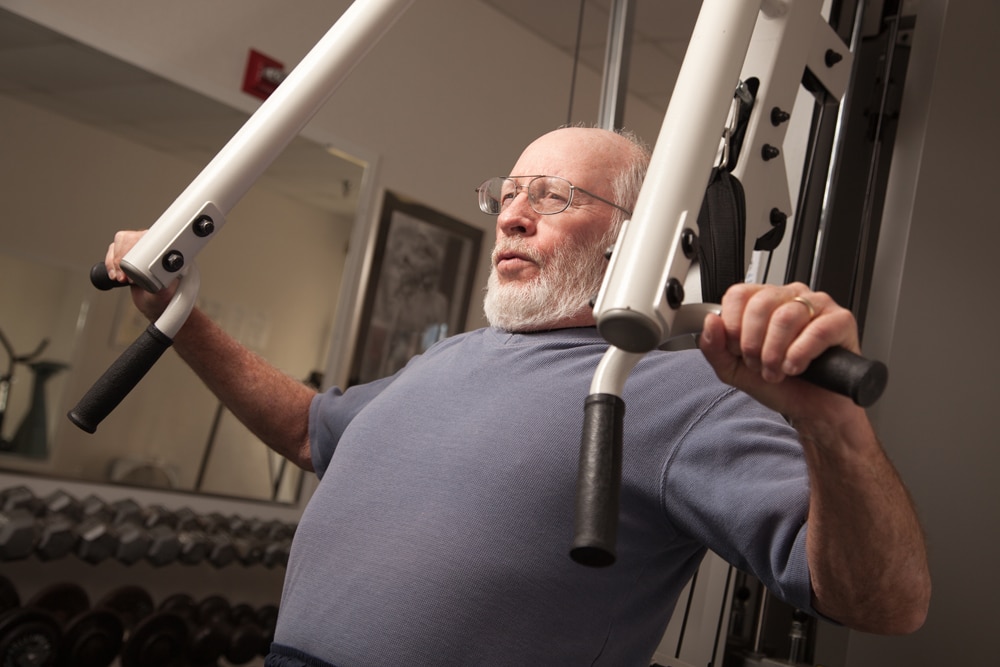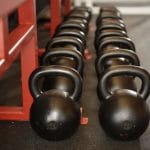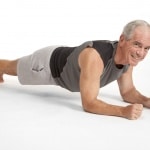Every trainer has his or her opinion on this matter, and every athlete still wonders: which exercises should I do first, and in what order do you plan your routine? Typically, the novice goes with the flow – whatever is available in the gym, or whatever muscle group he wants to build, regardless of what he did yesterday or the previous workout, whichever came last. The more experienced typically follow some fuzzy order based on the most recent article in the body building mag or some pseudo-health/fitness magazine. Trainers, I’ve noticed, have their preferred exercises – I have mine, too – and often put them in early in the routine without much consideration, if at all, to what the client needs let alone wants. I know I usually do an upper-lower, or lower-upper routine although I do have some clients with specific needs and goals for whom I’m more precise in my planning. However, the issue I often take seriously is whether or not to go big muscle group to little, or other way around.
Much research has been done on this and an abstract from the NSCA annual meeting in July 2009 adds weight to the accepted norm: If you want to build big, start large and go down. If you want to supplement building big, occasionally go small to large.
Influence of Exercise Order on Maximum Strength and Muscle Volume in Nonlinear Periodized Resistance Training
Roberto Simão, et al.
The purpose of this study was to examine the influence of exercise order on strength and muscle volume after 12 weeks of nonlinear periodized resistance training. The participants were randomly assigned into three groups. One group began with large and progressed toward small muscle group exercises (LG-SM) while another started with small muscle group exercises and advanced to large muscle group exercises (SM-LG). The exercise order for LG-SM was bench press (BP),  machine lat pull-down (LPD), triceps extension (TE), and biceps curl (BC). The order for the SM-LG was BC, TE, LPD and BP. The third group did not exercise and served as a control group (CG). Training frequency was two sessions per week with at least 72 hours of rest between sessions. Muscle volume (MV) was accessed at baseline, after six weeks and 12 weeks of training by ultrasound techniques. One repetition maximum strength (1RM) for all exercises was accessed at baseline and after 12 weeks of training. After 12 weeks both trained groups showed significant improvements in all exercises (1RM) as well triceps and biceps muscle volume improvement in relation to the control group; however, differences were not see between the training groups. Effect size data demonstrated that differences in strength and muscle volume were exhibited based on exercise order. Both training groups demonstrated greater strength improvements than the control group, but only bench press strength increased to a greater magnitude in the LG-SM group (ES=1.74 ) as compared to the SM-LG (ES=0.90). In all other strength measures (LP, TE, and BC), the SM-LG group showed larger effect sizes. Triceps MV increased greater in the SM-LG group; however, biceps MV did not differ significantly between the training groups. In conclusion, if an exercise is important for the training goals of a program, then it should be placed at the beginning of the training session, whether or not it is a large or a small muscle group exercise. In this approach, the immediate need of the client receives greater emphasis in program design than the traditional large to small muscle exercise sequence. Weaknesses in smaller supportive muscles can limit the performance of more complex exercises, increased focus on those smaller muscles (if they are found to be a limiting factor) early in an exercise session would be expected to have a positive impact on the performance of complex exercises over time.]
machine lat pull-down (LPD), triceps extension (TE), and biceps curl (BC). The order for the SM-LG was BC, TE, LPD and BP. The third group did not exercise and served as a control group (CG). Training frequency was two sessions per week with at least 72 hours of rest between sessions. Muscle volume (MV) was accessed at baseline, after six weeks and 12 weeks of training by ultrasound techniques. One repetition maximum strength (1RM) for all exercises was accessed at baseline and after 12 weeks of training. After 12 weeks both trained groups showed significant improvements in all exercises (1RM) as well triceps and biceps muscle volume improvement in relation to the control group; however, differences were not see between the training groups. Effect size data demonstrated that differences in strength and muscle volume were exhibited based on exercise order. Both training groups demonstrated greater strength improvements than the control group, but only bench press strength increased to a greater magnitude in the LG-SM group (ES=1.74 ) as compared to the SM-LG (ES=0.90). In all other strength measures (LP, TE, and BC), the SM-LG group showed larger effect sizes. Triceps MV increased greater in the SM-LG group; however, biceps MV did not differ significantly between the training groups. In conclusion, if an exercise is important for the training goals of a program, then it should be placed at the beginning of the training session, whether or not it is a large or a small muscle group exercise. In this approach, the immediate need of the client receives greater emphasis in program design than the traditional large to small muscle exercise sequence. Weaknesses in smaller supportive muscles can limit the performance of more complex exercises, increased focus on those smaller muscles (if they are found to be a limiting factor) early in an exercise session would be expected to have a positive impact on the performance of complex exercises over time.]
It’s almost a no brainer but for most of my clients, it’s important to consider seriously. Since most are here for pure health and simple function – that is, not for getting cut or performing at hi levels competitively – going large to small makes more sense on a variety of levels. For one thing, you burn more calories, bumping up the metabolic rate both during and after the session. That’s important. for another, esp for post menopausal women and all older (you define older) folk, building big muscle groups adds to bone density to those areas often measured – hips, spine, wrist. furthermore, the exercises that do this, esp the lower bod exercises, improve balance. Third, the neurological benefit of moving multiple joints and muscles leads to better transfer to activities of daily living. finally, Tho I’m sure there’s more, few can show the benefits of toned arms or legs because most have too much subcutaneous fat, so why bother. This is not to say some exercises of these smaller groups are not necessary. It’s simply to suggest that, as a priority, go big to small, but include at least one set of the smalls to ensure better bigs….just as the article suggests.














